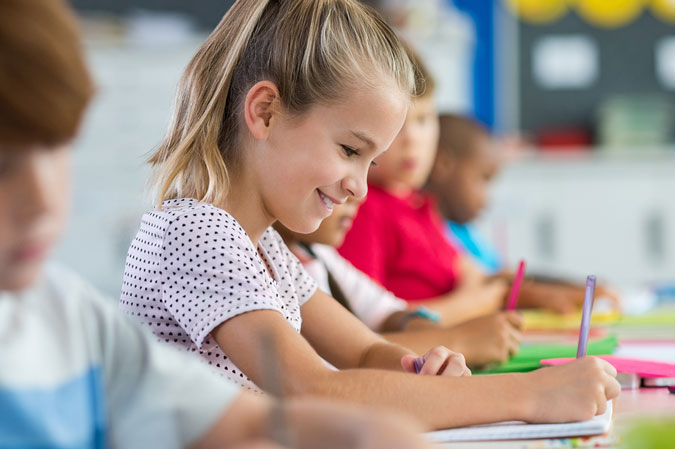6 Tips for a Functional and Organized Classroom Space

With the right layout, a classroom has the potential to support student learning and facilitate flexibility, organization, and fluid classroom movement. The size and shape of each classroom differs widely, but there are a few basic ideas to keep in mind when planning the physical layout of your classroom. Here are 6 tips for teachers to help make a functional and organized classroom space.
1. Use Wall Space Purposefully
You want to make sure you use classroom walls and keep walls and bulletin boards filled with things that have purpose - calendars, job charts, daily schedule for time management, and much more. Ensuring the things you hang on your walls are useful to students and teachers alike will make the most of that space and it's organization. Our Room Divider 360 can be printed with the alphabet, multiplication tables, motivational quotes, or whatever else you’d want to help your students learn.
2. Arrange Desks to Work With Your Space
The arrangement of desks in your classroom can either facilitate or inhibit your students learning. When arranging your room, think about the following:
- How many students are in your class?
- Will all students be able to see the teacher?
- Are there any safety issues to be aware of?
- What seating arrangement will best encourage productive discussion and interaction among students?
- Does the classroom layout incorporate room for small group work or cooperative learning?
3. Change Room Layout Throughout the School Year
Don’t be afraid to make changes throughout the school year. In fact, doing so can revitalize the space itself as well as your students work. Layout changes can boost creativity, allow for seating arrangement changes, and enhance the learning process. Using movable partitions in your classroom makes it easy to change up your layout any time at school.
4. Dedicate an Area for Small Group Work
Make sure you have a section of your room set aside to work with a smaller group of students at a time. Small group work lowers the student to teacher ratio, giving you a chance to work more closely with each student. You will want this work section to be relatively quiet with minimal distractions for your students.
5. Keep Storage Spaces Organized and Most Used Materials Close By
Keep shelves or storage cabinets with the materials you use the most within easy reach, so you can quickly access them as you need them. For example, keep a shelf near your desk for lesson plans, teaching books, or materials for upcoming lessons. Similarly, keep storage cabinets organized by subject area, so you know where to look when searching for something specific. A more organized classroom will help keep your classroom beat and will help you cut down the time you search for materials you need to use.
6. Incorporate Purposeful Color
Incorporating color in a purposeful way throughout your classroom can help functionality as well, believe it or not. Colors like blue and green are not only calming, but have also been shown to enhance creativity and promote communication, trust, and efficiency. One idea would be to color code different sections of your room, with each color corresponding to a different subject or task. Colorful partitions are a simple way to add color to your room without having to paint walls or buy new furniture.
However you decide to organize your classroom, keep in mind that if you are excited about and motivated by your space, each student will be as well. A flexible, functional, and organized classroom benefits everyone who uses it.
Visit our online shop for more useful tools for your classroom and follow us on social media to see how other customers have used our products to enhance the functionality of their spaces.
 New Zealand Dollar
New Zealand Dollar

